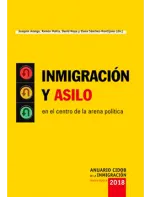Women migrants in Spain: bastions of resistance after the economic crisis

Since Spain became a country of immigration (1980–1990), the demand for domestic workers and carers – resulting from the incorporation of Spanish women into the labour market and in the wider context of an ageing population – favoured the development of feminised migration chains. As the female heads of transnational households, these women sent remittances back to their families in their country of origin. The economic boom at the start of this century caused a masculinisation of the stock of immigrants (providing labour in the construction sector), but the 2008 economic recession feminised immigration again. Women became bastions of resistance against the crisis, this time through their immobility (staying in Spain) and precariousness, and become female heads of household again (both in the countries of origin and reception).
Key Words: Spain, gender and migration, domestic staff, caregiving, social reproduction, feminisation of migration, female heads of household
DOI: doi.org/10.24241/AnuarioCIDOBInmi.2018.130
>> The full text articles of this issue are available only in Spanish language